From Mansions to Temples: How Architecture Preserves Canada’s Past
Canada’s historic homes and landmarks tell stories not just through the people who lived in them, but through the walls, windows, and craftsmanship that shaped their design. From ornate mansions to striking temples, each structure carries the character of its era and the vision of those who built it.
In Charlottetown, Beaconsfield Historic House stands as a vibrant example of Victorian elegance. Along the St. Lawrence, Fulford Place showcases Beaux-Arts grandeur and formal gardens. North of Toronto, Sharon Temple reflects ideals of equality in its unique timber design, while Calgary’s Lougheed House brings High Victorian style to the Prairies.
Together, these four sites showcase how architecture preserves history in brick, wood, and stone.
Beaconsfield Historic House, Charlottetown, PEI
Courtesy of PEI Museum and Heritage Foundation
The sunflower-yellow Beaconsfield House was one of Charlottetown’s most elegant homes, and upon its construction in 1877 it featured all the latest conveniences of the day, in addition to the finest materials and craftsmanship. The Late Second Empire and Italianate influenced home featured 25 rooms, imported tile, eight fireplaces, and painted-glass windows that featured the initials of the homeowner James Peake, an important shipbuilder and merchant in 19th century Prince Edward Island. Its beauty and charm attracted visitors the likes of the Governor General of Canada and Princess Louise, daughter of Queen Victoria.
Today, Beaconsfield Historic House remains a remarkable example of Victorian architecture, retaining many of its original features. However, its significance extends beyond its 19th-century origins. The site continues to evolve as a dynamic cultural space, reflecting ongoing research and a commitment to inclusive storytelling. Recent additions to the guided tours and interpretive programming explore lesser-known chapters of the house’s history, including its time as a nurses’ residence and the Bog neighborhood tour, an initiative that explores the untold history of the Black community in the area.
Open year-round, Beaconsfield Historic House invites visitors to engage with both its architectural beauty and its expanding historical narrative. Guests can participate in guided tours or attend a variety of lectures and special events. Seasonal programming, particularly in the fall and winter, offers fresh opportunities to experience the site through new lenses, reinforcing its role as a living museum that continues to grow in relevance and reach.
For more information on current programming and upcoming events, visit the Beaconsfield Historic House website.”
Fulford Place, Brockville, ON
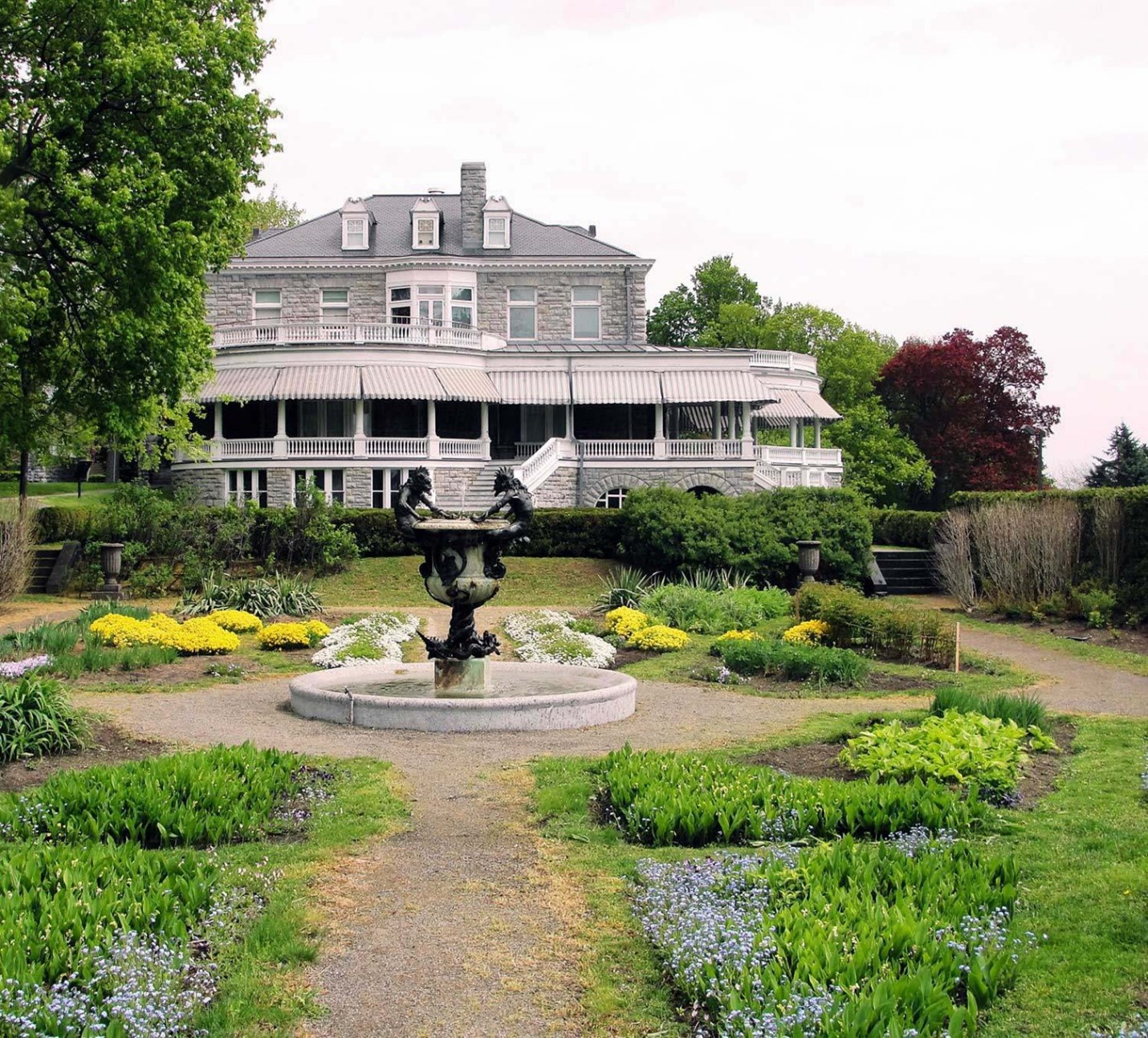
Courtesy of Ontario Heritage Trust
On the shore of the St. Lawrence River, George Taylor Fulford constructed this sprawling house between 1899 and 1901 after amassing his fortune selling Dr. Williams’ Pink Pills for Pale People (a patent medicine that claimed to cure chorea, an involuntary movement disorder, as well as other conditions like nervous headache, pale and sallow complexions, and all forms of weakness). The primary function of this Beaux-Arts mansion was entertaining, and in order to do so it was equipped with a grand hall, a dining room capable of seating over 30 guests, a spacious verandah, a Rococo-style drawing room for the ladies and a Moorish-style smoking room for the gentlemen.
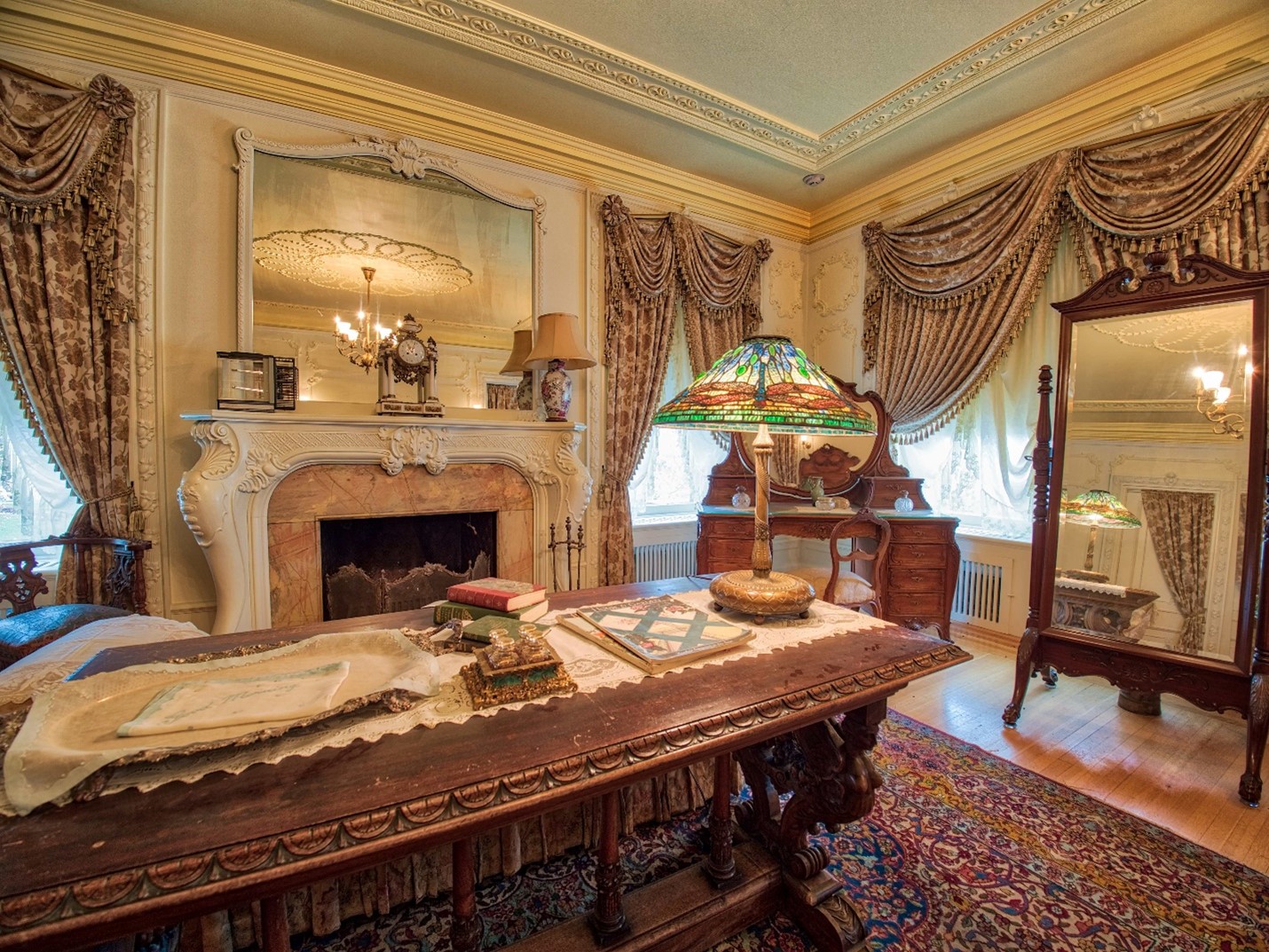
Photo: Mark Wolfson
While the interior is certainly impressive, the exterior features beautiful gardens designed by the Olmstead Brothers and are a rare example of privately owned Olmstead-designed gardens – the Olmsteads primarily designed public spaces like the campus of Stanford University and the Seattle Park system, while their father designed Central Park in New York City. When the mansion was donated to the Ontario Heritage Trust in 1987, the Trust painstakingly restored the historic house to how it would have looked in the Edwardian period.
Visit Fulford Place for a tour of the home and the gardens, explore interactive displays, and wander the halls of this restored mansion. Visit their website to learn more.
Sharon Museum & Gardens, Sharon, ON
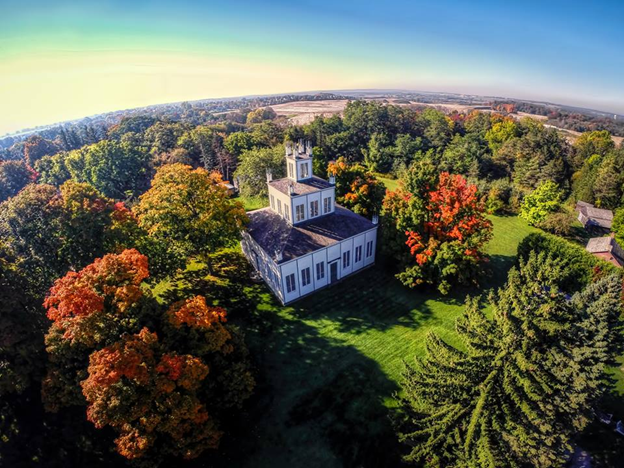
Courtesy of Sharon Museum & Gardens
Sharon Museum & Gardens, constructed between 1831 and 1835, may seem like a simple three-story building from the outside, though the choices made in the architecture and construction of the building reflect the values and beliefs of those who constructed it. The Children of Peace, a breakaway sect of Quakers led by David Wilson, built the temple and the surrounding buildings with the focus of creating a collaborative society. Sharon Temple would provide the Children of Peace with a space to congregate, socialize, and make music.
To emphasize the spirit of equality and collaboration, the building is perfectly square and its symmetrical construction evokes the spirit of equality that should be practiced within its walls while the doors that open on each side of the building symbolize that all who enter are entering on equal footing. The mezzanine was constructed for musicians, and the acoustics of the building lend itself to some incredible music with the building almost being an instrument in and of itself. The staircase leading up to the mezzanine, known as Jacob’s Ladder, appears to be curved due to the slightly curved stingers (structural elements that anchor the staircase) when it is in fact a straight and steep line, resulting in a mind (and stair) bending optical illusion.
Sharon Museum is considered a masterpiece in wood construction, and its timber frame is held together by pegged mortise and tenon joints. For those of us who are not carpenters or woodworkers, a mortise and tenon joint consists of two pieces of wood that fit into each other without the use of screws, nails, or other materials. It’s said that Sharon Museum was constructed with no nails at all, though this is nothing more than a rumour.
You can visit this testament to craftsmanship and artisanship and learn more about the ideals of the Children of Peace by visiting Sharon Museum & Gardens. More information about tours, admission, exhibitions, and special events can be found on their website.
Lougheed House, Calgary, AB
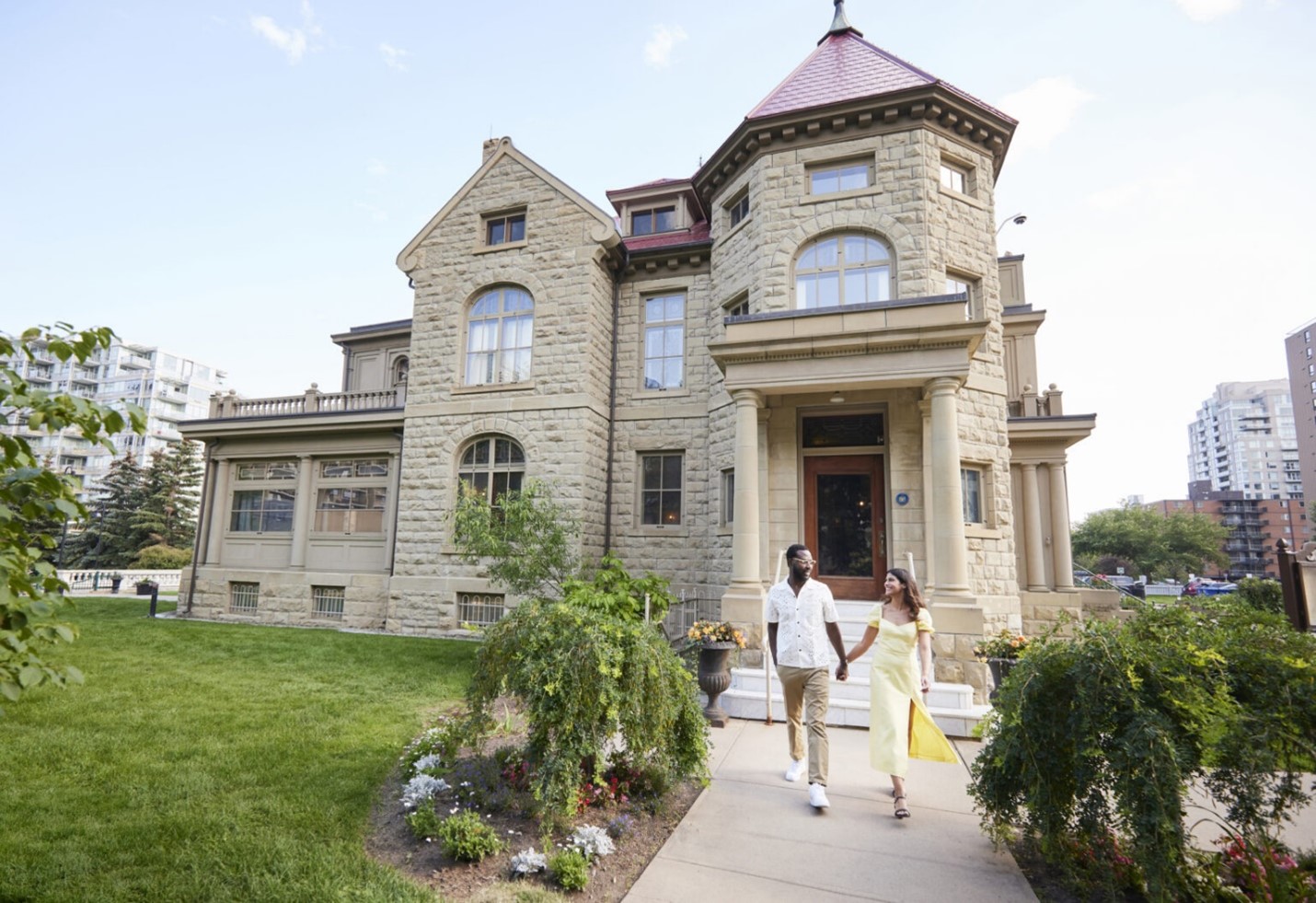
Courtesy of Tourism Calgary
Built in 1891, and expanded in 1907, Lougheed House was originally known as Beaulieu – Beautiful Place. The 14,000 square foot Victorian sandstone mansion was located on the edge of Calgary on Millionaire’s row, with 2.8 acres of lush gardens. Constructed for the Lougheed family, with towers, asymmetrical massing, stained glass windows, anaglypta wallpaper, glittering mica and plaster cherubs in the Drawing Room, the house also had the latest modern luxuries including hot running water and electricity.
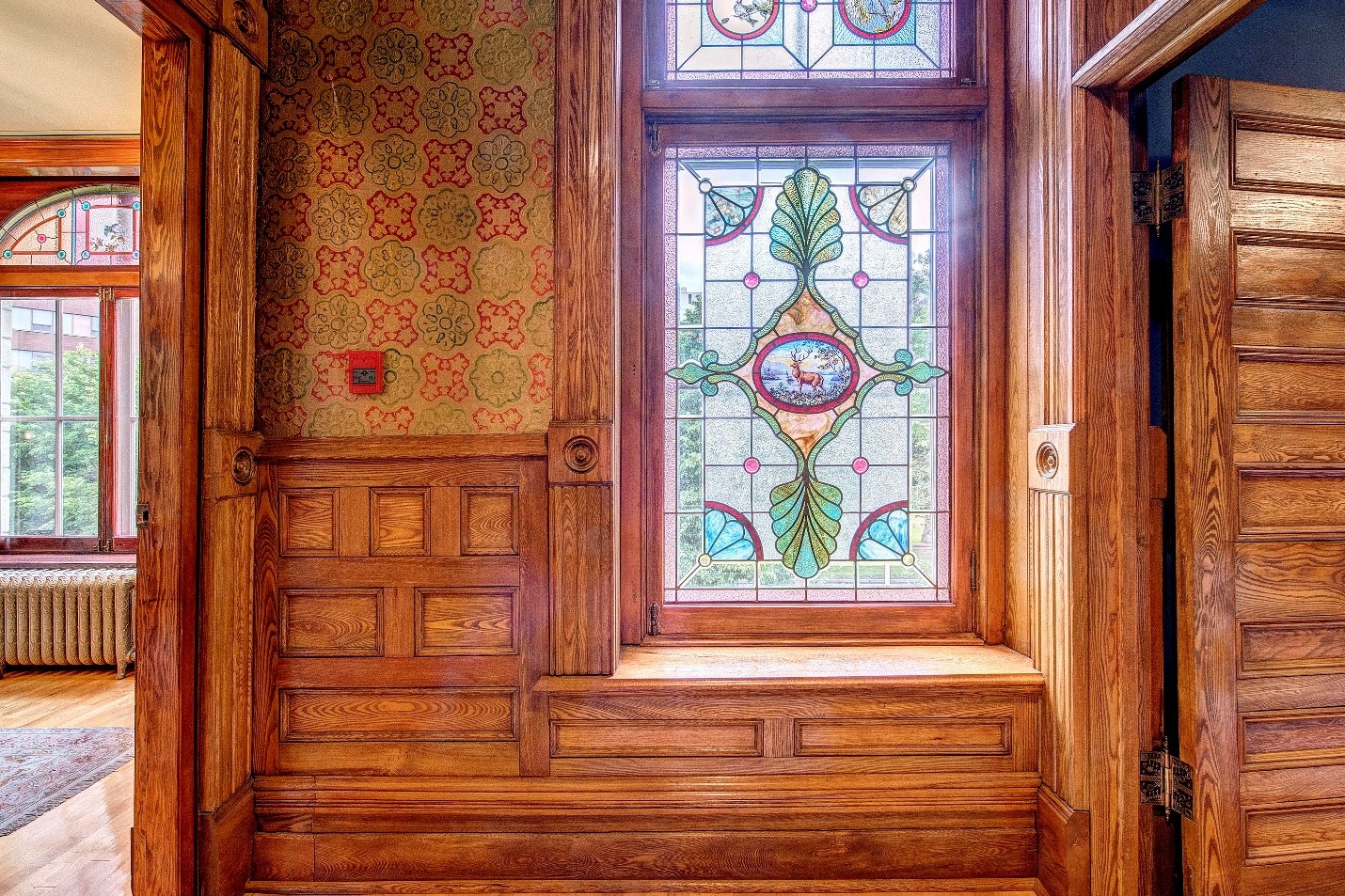
Courtesy of Lougheed House
Influenced by the popular architectural styles of the time, elements of Queen Anne Revival style and French Chateau architecture can be found throughout the house. When construction was completed, the Calgary Herald stated that “In design, solidity, accommodation and furnishings it leaves nothing to be desired.”
After the Lougheed family, the mansion housed several organizations including the Canadian Women’s Army Corps and Red Cross, each which made their own changes, including building an addition to the house which was eventually removed during the restoration.
Lougheed House is now celebrating its 20th anniversary as a public site and museum, opening in 2005 after a community and volunteer-driven restoration.
Explore the house, take a guided tour, or book a private event today – learn more on their website.
Visiting these sites is more than stepping into the past — it’s experiencing history through design. Each building reflects the ambitions, values, and artistry of its time, offering a glimpse into how Canadians once lived, gathered, and dreamed. Whether grand or humble, their architecture continues to inspire, reminding us that history is best understood when we walk through its doors.
The above historic sites are part of the Trust’s Passport Places program, a National Trust membership benefit that provides free access to over 110 historic places in Canada, as well as 1000+ National Trust places abroad. Become a member today!

